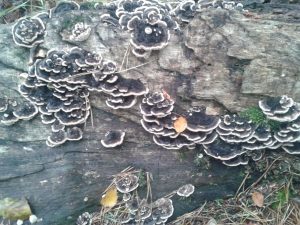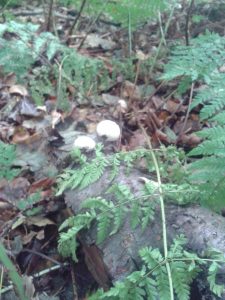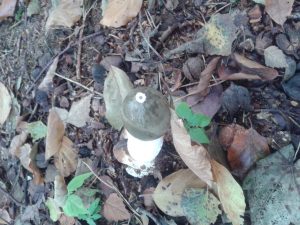
TCV Stirling’s Wednesday group were at Muiravonside Country park to join in with the removal of Rhododendron ponticum and the invasive sycamore. Rhododendron are prolific seed producers and they will crowd out native flora if left unchecked. Sycamore trees are good for the landscape but as they too produce hundreds of seed that set very easily, they can become dominant and their large leaves block the sun stopping other plants thriving.
So, while removing these two plants there was time to examine what else grows in the woods and we found a variety of fungi!
*** WARNING!! ***
Never eat ANY fungi that you find unless you are with or have been
trained by a professional fungi forager.
This is Trametes versicolor, aptly named Turkey Tail (see foraging warning above!) and is found all over country.
The Turkey Tail fungus can be found throughout the year but the best time to see it is in the autumn and winter months.It grows on fallen trees and branches and can also be seen growing on standing stumps of dead trees. The colourful caps can grow up to 10cm in diameter and the wide range of colors and overlapping pattern make it one of the most attractive fungi.
The next one we spotted is Bovista plumbea, which is commonly known as Puffball.
These are quite small balls, up to 4 cm across, whereas its cousin the GIant Puffball can grow up to 80 cm! They are found in parks and grassland clustered together and the best time to see them is May to October so best get out quick if you want to spot some.
The third one is an odd looking thing – Phallus impudicus, the Stinkhorn!
The Stinkhorn emerges from an egg in the soil and are easy to find once you smell them! They grow in groups so you should be able to find some still in the egg shape among the group. Some people eat them when they are like this but please heed the warning above. Once you have had a whiff, you will wonder why anyone would have this for lunch.
There is lots more to see and do Muiravonside Country Park so have a look at their website and join in.


